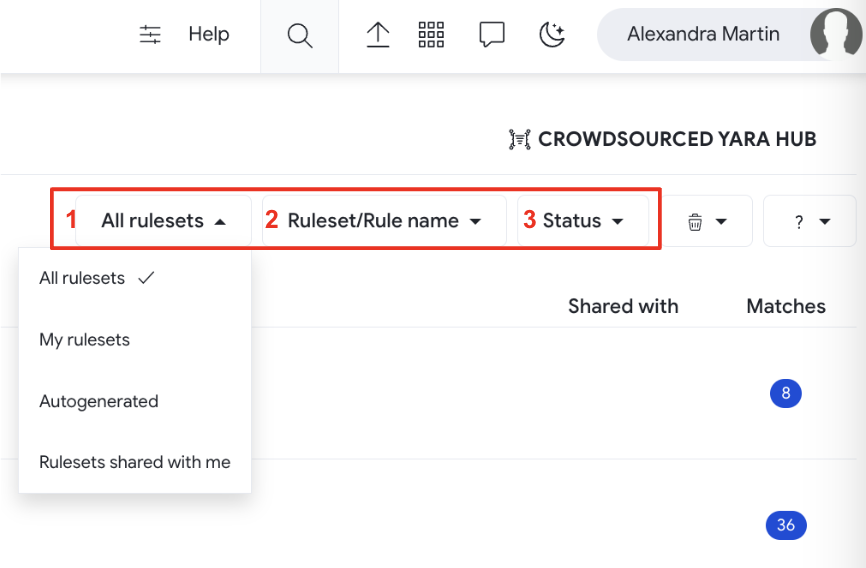As we previously discussed, YARA Netloc uncovers a whole new dimension for hunting and monitoring by extending YARA support to network infrastructure. All VirusTotal users have already access to different resources, including templates, a GitHub repository, and the official documentation to quickly get started on writing network YARA rules.
You can also find excellent external resources, like this blog post from SentinelOne's Tom Hegel, which discusses the use of YARA Netloc in a real investigation.
And as we highlighted in our previous post, this is just the beginning. We are playing with new ideas and features that leverage YARA Netloc, and we couldn't resist implementing a few of them already. In this blog, we will discuss a new functionality that uses YARA Netloc to help us track indicators of compromise (IoCs) and their related infrastructure with just a few clicks.
IoCs subscription
You might have noticed that all IoC reports in VirusTotal have a new Follow dropdown menu in the top right corner, which offers a few options.
The idea of this new feature is to offer VirusTotal’s users easy ways to track any IoCs’ activity. For instance, as shown in the previous screenshot, we are offered to monitor any infrastructure that this malware interacts with in the future (URLs, domains or IPs), or being notified when we see it being downloaded from anywhere.
When clicking any of these options, we are creating a one-click Livehunt rule based on a template. We can customize the resulting rule as needed, or simply deploy it as suggested, although we highly recommend renaming it to easily identify it.
For example, by clicking URLs downloading it in the previous sample’s report, the following rule will be automatically generated and deployed in our Livehunt:
import "vt"
rule UrlDownloadsFile {
condition:
// vt.net.url.new_url and // enable to restrict matches to newly seen URLs
vt.net.url.downloaded_file.sha256 == "2cb42e07dbdfb0227213c50af87b2594ce96889fe623dbd73d228e46572f0125"
}
rule UrlDownloadsFile {
condition:
// vt.net.url.new_url and // enable to restrict matches to newly seen URLs
vt.net.url.downloaded_file.sha256 == "2cb42e07dbdfb0227213c50af87b2594ce96889fe623dbd73d228e46572f0125"
}
This rule will simply track and notify any new URL VirusTotal observes downloading that particular sample.
Livehunt dashboard
The Livehunt dashboard consolidates all your team's and your own Livehunt YARA rules in one place. We added three filtering options to help you quickly move around.

- The first one filters rules created by yourself, created by other users in your VirusTotal group and shared with you, or “Autogenerated” with the IoC’s report Follow option, as previously explained.
- The second filter allows you to search for rulesets containing a specific substring in its name or anywhere else in the ruleset, including comments. For example, if we use the hash of the file in the previous example (2cb42e07dbdfb0227213c50af87b2594ce96889fe623dbd73d228e46572f0125), we get the rule we previously created. Please note VirusTotal will automatically add tags corresponding to the to the names of the rules in a ruleset, plus the "Autogenerated" tag if the ruleset was generated with the Follow option:
- The third one allows you to filter by ruleset status (active or inactive).
The dashboard also shows whether rulesets are active, as well as the entity that ruleset matches against. You can also find which users and groups that ruleset was shared with and, lastly, the number of matches - which lists all matching IoCs in the IoC Stream by clicking it.
Wrapping up
In the previous posts in our "Actionable Threat Intel" series we showed how to use the new YARA editor, deploying Livehunt rules from the editor either using templates or from scratch, using Netloc for creating network hunting rules, and how to track IoCs of interest with automatically generated hunting rules.
All these elements help us to set the monitoring rulesets we need to be on top of our investigations or any malicious activity set of our interest. IoC Stream serves as a single repository to centralize all our notifications, including Hunting rules, IoC Collections and Threat Actors subscriptions.
Last but not least, we would like to specially thank our colleagues from Mandiant and all the security researchers who kindly offered to help during early stages and beta testing to help make Netloc hunting as good as possible:
Paul Rascagneres (@r00tbsd), Volexity
Ariel Jungheit (@arieljt), Kaspersky
Marc Green (@green0wl), eBay
Vitor Ventura, Cisco
Markus Neis (@markus_neis), Arctic Wolf
Matt Pierce, CrowdStrike
Pasquale Stirparo (@pstirparo), Independent Researcher
Tom Hegel (@TomHegel), SentinelLabs
Paul Rascagneres (@r00tbsd), Volexity
Ariel Jungheit (@arieljt), Kaspersky
Marc Green (@green0wl), eBay
Vitor Ventura, Cisco
Markus Neis (@markus_neis), Arctic Wolf
Matt Pierce, CrowdStrike
Pasquale Stirparo (@pstirparo), Independent Researcher
Tom Hegel (@TomHegel), SentinelLabs
We hope you find these features as useful as we do. If you have any questions or requests please do not hesitate to contact us.
Happy hunting!
